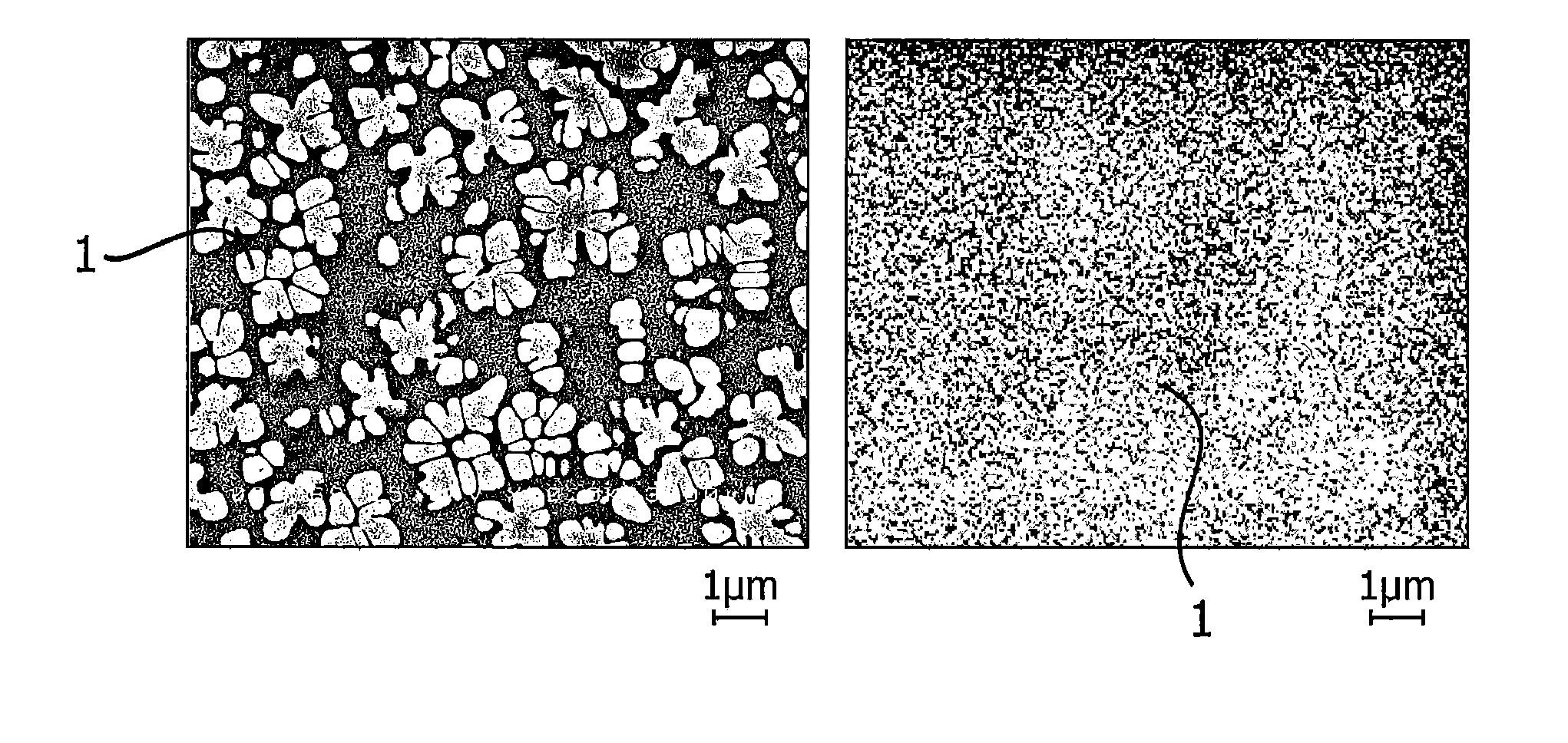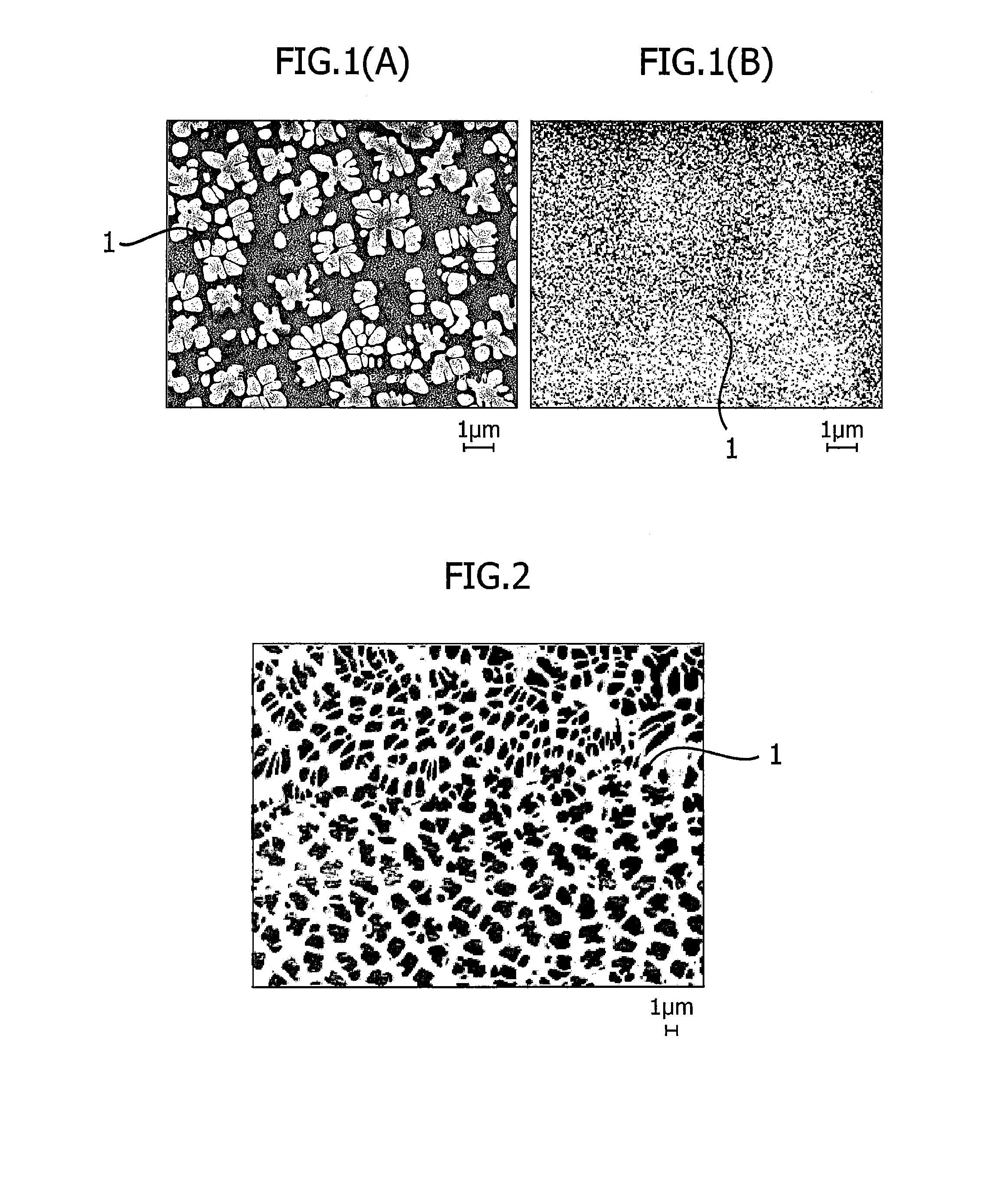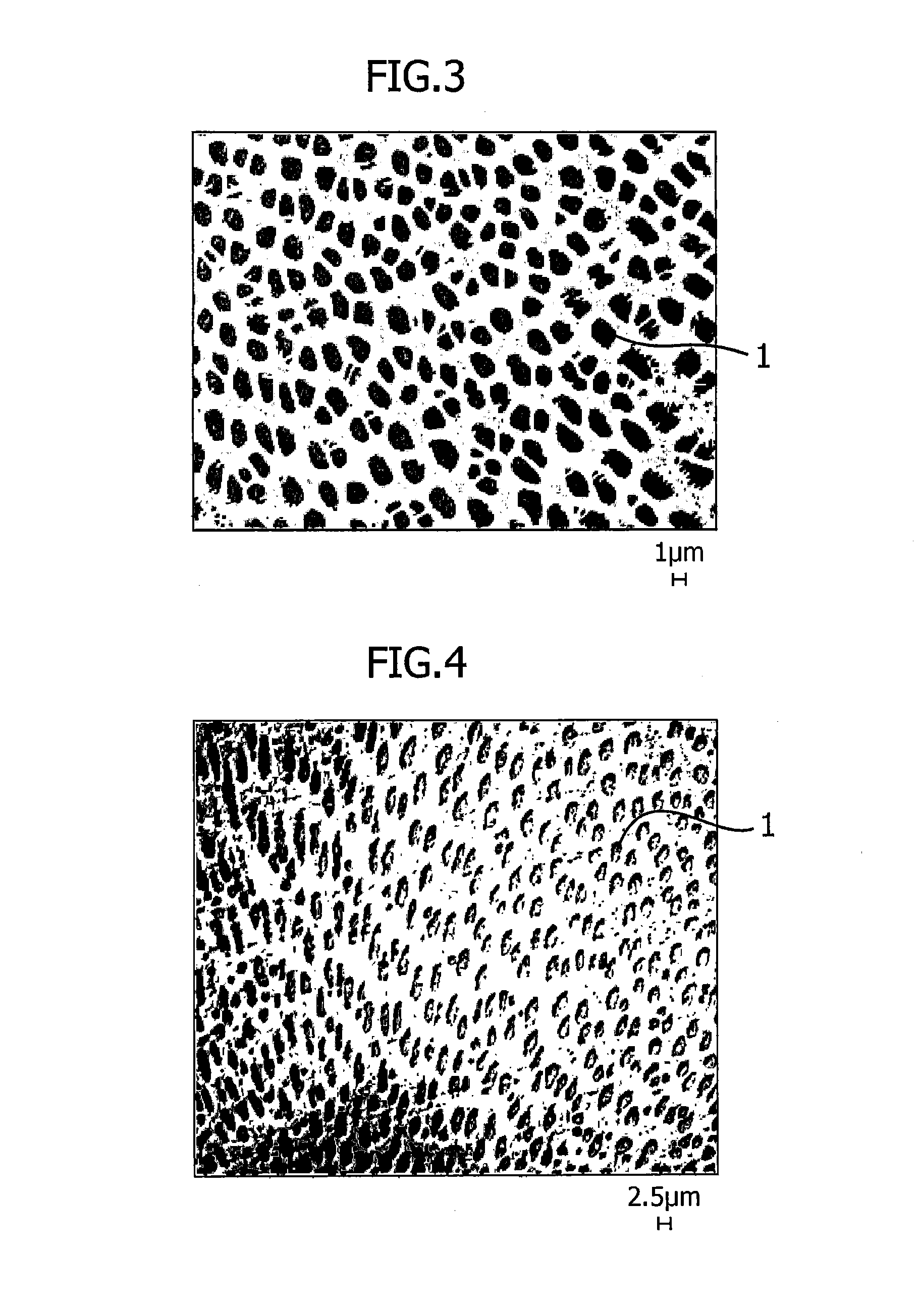Ni-BASED HEAT-RESISTANT SUPERALLOY AND METHOD FOR PRODUCING THE SAME
a superalloy and heat-resistant technology, applied in the field of ni-based heat-resistant superalloy and a production method, can solve the problems of high production cost and deformation during production, and achieve the effects of improving material yield, excellent hot workability, and reducing energy and time required for working
- Summary
- Abstract
- Description
- Claims
- Application Information
AI Technical Summary
Benefits of technology
Problems solved by technology
Method used
Image
Examples
first embodiment of
1. First Embodiment of Production Method
Preparation Step
[0049]A material to be hot-worked having the composition discussed above can be produced by vacuum melting, which is a conventional method for producing a Ni-based heat-resistant superalloy. By this method, oxidation of active elements such as Al and Ti can be suppressed, and thereby inclusions can be reduced. To obtain a higher-grade ingot, secondary or tertiary melting such as electroslag remelting and vacuum arc remelting may be carried out.
[0050]An intermediate material that has been preliminarily worked after the melting by working such as hammer forging, press forging, rolling, and extrusion may be used as the material to be hot-worked.
First Heating Step
[0051]The first heating step is capable of improving the hot workability by alleviating solidification segregation that may occur during casting. In addition, this first heating step has an effect of softening the material by solutionizing precipitates such as the γ′ phase...
second embodiment of
2. Second Embodiment of Production Method
Preparation Step
[0062]The ingot having the above-described composition that is used in the present embodiment can be obtained by vacuum melting similarly to other Ni-based heat-resistant superalloys. Thus, oxidation of active elements such as Al and Ti can be suppressed and inclusions can be reduced. To obtain a higher-grade ingot, secondary or tertiary melting such as electroslag remelting and vacuum arc remelting may be carried out.
[0063]The ingot obtained by melting may undergo homogenization heat treatment in order to reduce solidification segregation that inhibits the hot workability. For the homogenization heat treatment, the ingot may be retained at a temperature ranging from 1,130 to 1,200° C. for 2 hours or more and then slowly cooled to form a coarse γ′ phase.
[0064]If the γ′ phase has not grown sufficiently during the slow cooling after the homogenization heat treatment described above, in order to further coarsen the γ′ phase and i...
example 1
[0071]An ingot of a Ni-based heat-resistant superalloy having a chemical composition shown in Table 1 with the weight of 10 kg was prepared by vacuum melting, which is called “material to be hot-worked A”. The dimension of the ingot of Ni-based heat-resistant superalloy was about 80 mm×90 mm×150 mmL.
[0072]The test pieces were sampled from the ingot of Ni-based heat-resistant superalloy mentioned above, were treated in 8 combinations of the heating step(s) and the cooling step shown in Table 2 and then were subjected to high temperature tensile tests. The test piece used for the tests has a parallel portion with a diameter of 8 mm and a length of 24 mmL and had a gauge length of 20 mmL.
TABLE 1(% by mass)CAlTiCrCoMoWBZrMaterial to be0.01552.504.8813.4814.932.991.240.0300.034hot-worked A* The balance is Ni with inevitable impurities.
TABLE 2FirstSecondReductionTestheatingCoolingheatingof areaNo.stepconditionstep(%)Note11200° C. ×0.01° C. / secN / A65.2Example4 hrs21150° C. ×0.03° C. / secN / A6...
PUM
| Property | Measurement | Unit |
|---|---|---|
| temperature | aaaaa | aaaaa |
| temperature | aaaaa | aaaaa |
| particle size | aaaaa | aaaaa |
Abstract
Description
Claims
Application Information
 Login to View More
Login to View More - R&D
- Intellectual Property
- Life Sciences
- Materials
- Tech Scout
- Unparalleled Data Quality
- Higher Quality Content
- 60% Fewer Hallucinations
Browse by: Latest US Patents, China's latest patents, Technical Efficacy Thesaurus, Application Domain, Technology Topic, Popular Technical Reports.
© 2025 PatSnap. All rights reserved.Legal|Privacy policy|Modern Slavery Act Transparency Statement|Sitemap|About US| Contact US: help@patsnap.com



